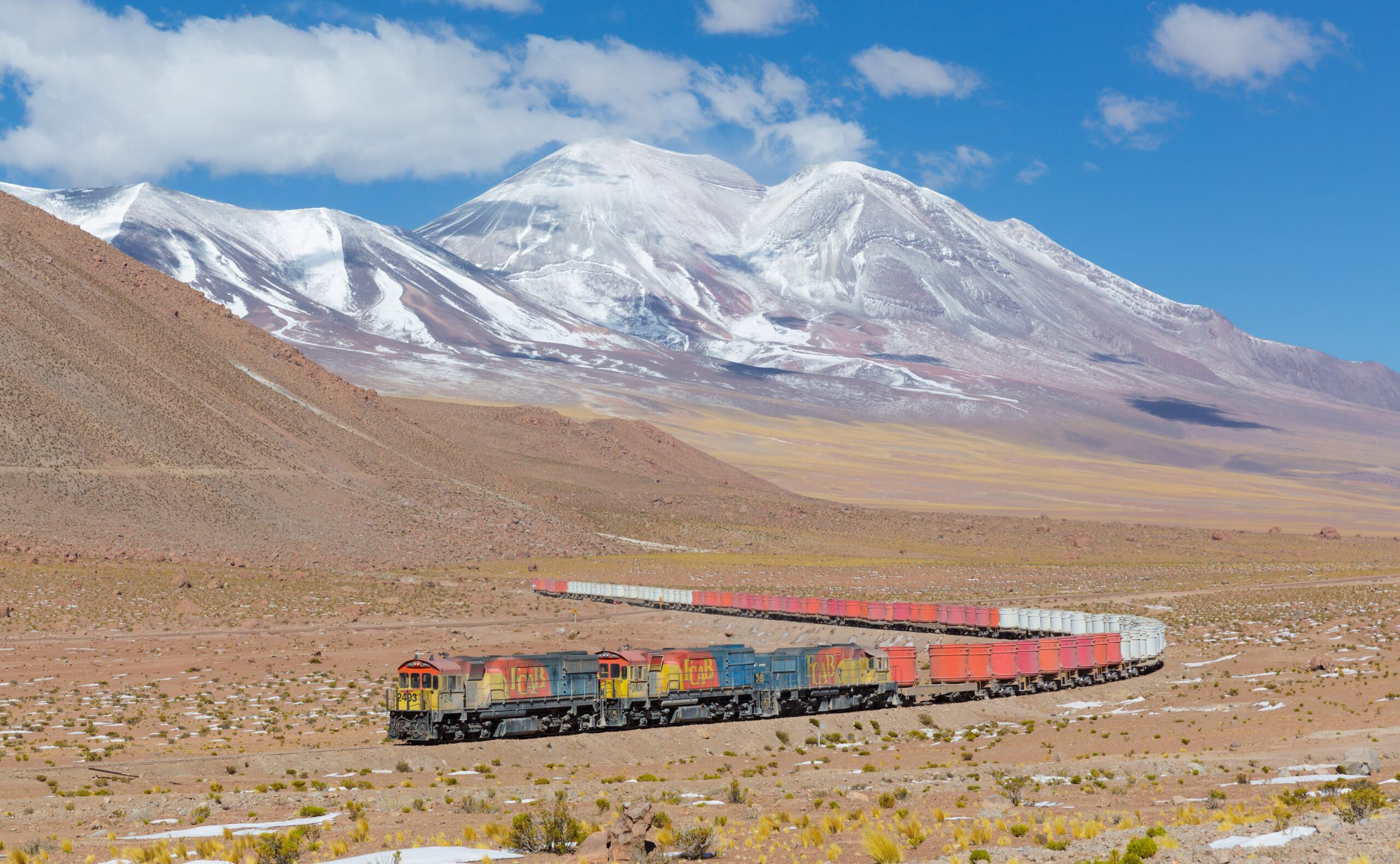
Introduction
At the two extremes of the territory called Chile, we find two ecosystems defined by their vastness: the Atacama Desert and the Magallanes steppe. To travel across them is an invitation to recall a shared origin: here, in the immensity of these plains, lives the oldest microbiota in the world. The human eye—accustomed to the incessant stimuli of the city, or yearning for the greenery conventionally associated with “nature”—often fails to recognize this richness. Very particular conditions are required to perceive it: the memory and historical wisdom of local inhabitants, and the scientific evidence gathered through relatively recent research. As the authors of this piece, we recognize and honor those who have guided us on this path of learning how to see. To understand the depth and vastness of the living trajectories of these territories requires expanding our temporal gaze millions of years back, toward other geological eras when humanity was nothing more than a latency. It means attuning our ears to silence and our eyes to immensity.1)
What do the steppe and the desert have in common?
The steppe at the southernmost end of Chile seems to merge with the highland landscapes of the north. Vast expanses of land where guanacos, rheas, skunks, and countless other beings run free, revealing themselves to the patient eye of those who know how to look beyond appearances. South of the continental area of Magallanes, specifically in San Gregorio, lies the Pali Aike National Park. Here, the land is covered with basaltic lava, evidence of volcanic force during the Pliocene geological period. Millions of years later, human communities came to inhabit this area. Today, it is one of the most important archaeological sites in all of Patagonia, since evidence has been found in the Pali Aike Cave of populations who used the place as a shelter more than 11,000 years ago.
Crossing the Strait of Magellan lies Tierra del Fuego. Just six kilometers from the town of Porvenir is the Laguna de los Cisnes. This is one of only six places in the world where the eye can see, stretching to the horizon, mineral structures similar to reefs: stromatolites, built by cyanobacteria over millions of years. These are the oldest life forms on Earth—our great-great-grandmothers. Their presence paves the way for investigating the origins of life on the planet.
If we move 3,500 kilometers north, we reach the Atacama Desert, spanning the regions of Antofagasta and Atacama. In its nearly 105,000 km² of landscapes—reminding us of the Earth’s and the planets’ beginnings—it is possible to find all kinds of forms of existence. From the most spectacular in color and size, such as flamingos, to the tiniest, like cyanobacteria also found around highland lagoons and salt flats. The complexity of this ancestral microbiota has barely been studied. The vastness of stone and minerals consumes the inattentive gaze, lost in the illusion that “there is nothing” in the desert.
But these are also the places where a gaze that seeks wealth through production rather than recognition—exchange value rather than intrinsic value—finds two prized resources for its ends: sun and wind. Antofagasta and Magallanes have been considered “development hubs” for hydrogen as an energy vector. Hydrogen is an energy vector—that is, a substance or device capable of storing energy for later use—which can be produced in multiple ways. Unlike other energy carriers such as gas or oil, hydrogen does not exist naturally as a free energy source, but is found combined with other chemical elements. To make it usable, a separation process is required, which demands a certain amount of energy. For example, to obtain hydrogen from water by separating it from oxygen, one must break down the water molecule using electrical energy, in a process called “electrolysis.” If the energy used for this process comes from low-carbon sources such as wind or solar, the result is usually referred to as “green hydrogen.”
As part of a corporate energy transition—that is, one led and shaped by the interests of large capitalist corporations—“green” hydrogen has been promoted as a substitute for fossil fuels where electrification falls short. This means sectors that are difficult to convert to electric processes, such as heavy freight transport, fertilizer production, and the steel and metallurgical industries in particular. All of this is advanced under the political banner of reducing greenhouse gas emissions—the drivers of the climate crisis—mobilized to justify, at all costs, the expansion of “low-carbon” infrastructure within what has been called the decarbonization consensus.2) This paradigm raises the banner of the climate crisis to argue for a supposed shift away from fossil fuels toward non-fossil sources, sidelining other urgent concerns, including the enormous energy inequalities embedded in this so-called “transition,” as well as the pressing need to democratize and decentralize our energy systems.
The production of green hydrogen requires the installation of large-scale infrastructure: desalination plants, hydroducts, ports, storage and transport systems, and above all, vast fields of solar panels and wind turbines. Hence why the powerful sun of Antofagasta and the strong winds of Magallanes are being envisioned as “windows of opportunity,” as places that give Chile “comparative advantages” for developing this industry. Such perspectives, as often happens with megaprojects, fail to account for the specific ecological and socio-territorial contexts. They look without seeing the profound richness of these immensities—far older and more expansive than our narrow and recent human condition—without valuing the knowledge and practices of the ecosystems and microbiota present there, which are key not only to understanding origins but also the interdependent relations between diverse forms of life.3)
The Haru Oni project involves an investment of US$74 million and is located on a 3.7-hectare site within the Tehuel Aike property in Punta Arenas. Photo: Xinhua. Source: La Jornada
Affected and Affecting
From the perspective of local inhabitants, these projections generate suspicion. “We lack nothing” is a phrase we have repeatedly heard among the coastal residents of Antofagasta, who are emerging as the main ones affected by the green hydrogen industry. Their coastal lives—long relegated to the margins within the extractive and export-oriented ecosystem of Chile’s so-called “mining region”—have suddenly been invaded—or rather, harassed—by consultants, community liaisons, and state representatives. All come seeking the consent of Chango fisher and Indigenous communities to turn their territory into a new “engine of development” through large-scale green hydrogen production.
For the Chango people, this promise sounds like a threat. Their eyes are accustomed to perceiving the wealth of another vastness: the sea, inhabited in its full spatial and temporal depth, as an ancestral people of fishers and shellfish gatherers. The shell middens of their ancestors pile up along the coasts, evidence of more than 8,000 years of abundant life in food, cooperation, and patience. Now, as they examine the project maps, they realize that these will be located in the best fishing and shoreline gathering areas. Many of these species are not commercial, or are not categorized as “relevant” in the eyes of public or private interests. Yet they are relatives and companions—in Donna Haraway’s words—whom they have known for millennia. Fish, shellfish, and seaweed with whom they coexist from childhood to old age.
Walking the slopes of the coastal mountain range, one finds fog oases that give the camanchangos their name—camanchaca—a treasure of life we have yet to fully discover, let alone understand. Further east stretch the vast expanses of the driest desert in the world, where wind power prospecting continues to uncover the archaeological heritage of the Chango people. Ironically, the very processes that reveal these remains—wind and solar megaprojects—are also those putting at risk the embodied memory of this millennial people.
In Magallanes, one of the latest projects submitted for environmental evaluation acknowledges the negative impact this industry would have on the ruddy-headed goose, proposing as compensation the creation of a conservation foundation for this bird.4) The Magellanic plover or ruddy-headed goose travels thousands of kilometers to reach the subantarctic region, crossing areas destined to become swarms of wind towers, spinning to produce the coveted “zero-carbon” fuel desired by the energy-hungry societies of the Global North. Those who love and study these birds warn of the risks and impacts of advancing in the great “green” race of industrial hydrogen, which has parceled out the immense Magellanic steppe. Some companies seek to participate in bird conservation while simultaneously pushing forward megaprojects that affect them—as with the Fundación Gaviotín Chico in the industrialized bay of Mejillones in Antofagasta. Can alliances between the private sector and local governments really protect the very species from which they take their names? Where will the heirs of the millennial Chango culture go to fish? Where will they encounter the whales? What will become of the birds that fly from Alaska in search of the marshes of the Strait of Magellan?
The dynamics unfolding in both territories alert us to the formation of new sacrifice zones, which now—like hydrogen—we might call green sacrifice zones. The decarbonization consensus drives the expansion of new extractive frontiers, which in places of the Global South such as northern Chile means the overlap of industries like green hydrogen, in turn deepening lithium and copper mining—both resources promoted by corporate interests as “critical for the transition.”5) While certain places are mapped as quarries of extraction, the Global North—including the “Norths within the Souths”—continues to cling to fossil capitalism and the imperial way of life it affords them. Only now it comes wrapped in the benevolent label of the “green.”
“But what do you propose?”
This question reverberates wearily in the ears of those who inhabit and safeguard the affected territories, when they say they do not want their regions turned into Chile’s new “productive identity.” Chile’s energy potential, calculated from urban privilege, is based on planning these territories’ functionality for industrial activity and its artifacts: ammonia pipelines, transmission lines, desalination plants, megaports, solar panels, wind turbines. The question ignores the deeper issue of why we would want to propose something at all; specifically, for what and for whom would we want to produce “green” hydrogen?
In response to this question, the answer we have heard takes us back to the depth and immensity not only of the landscape but of existence itself: our life is sufficient. It needs no justification, no improvement. The sea, the steppe, the camanchaca are already abundant. Already present is the wealth that makes our existence—and all forms of existence—possible. We do not need “green” extractivisms because, as we heard at a gathering of organizations in Magallanes, “Patagonia is already green.”
Recalling the sea, the desert, and the steppe, we recognize the traces of their vastness and depth in our hearts and consciousness. This vastness and depth is what we need to remember: that the wealth and well-being we long for are not in the race for infinite growth, but in the sufficiency of the inhabited present.
1)Note: this article emerges from our accompaniment since 2023 of processes of articulation and territorial defense in the regions of Antofagasta and Magallanes, Chile.
2)Bringel, B., & Svampa, M. (2024). Energy transition and the new shape of green colonialism. En A. Magnelli, F. Maia, & P. H. Martins, Dependency Theories in Latin America (1.a ed., pp. 242-258). Routledge. https://doi.org/10.4324/9781003424291-14
3)Even from a human perspective, research into planetary microbiota can contribute significantly to research into vital functions of bodies and territories, such as detritivorous and regenerative functions.
4)See: https://seia.sea.gob.cl/archivos/2024/07/23/Capitulo_7_Plan_de_Medidas_de_Mitigacion__Reparacion_y_Compensacion_Rev.0.pdf
5)Cabaña, G., & Balcázar M., R. (2025). Green Sacrifice Zones in Antofagasta: Chile’s energy transition promises decarbonization, but in the north of the country, a growing extractive frontier threatens water, land, and Indigenous ways of life. NACLA Report on the Americas, 57(3), 286-294. https://doi.org/10.1080/10714839.2025.2542080
Teaser photo credit: Kabelleger / David Gubler, CC BY-SA 4.0, via Wikimedia Commons



